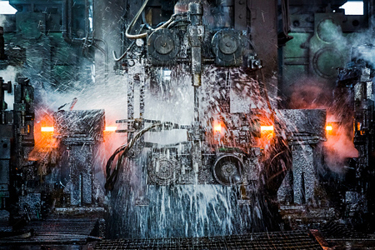Reducing And Reusing Water In Steel Manufacturing

The art of manufacturing steel for industries is well over 100 years old. Within this time, the steel business has fulfilled consumer needs, including construction, transportation, and manufacturing. The steel manufacturing process is quite intensive as it requires a lot of water to cool down the application. Steel plants constantly look for strategies that can help sustain the steel for a longer time by efficiently improving water and energy consumption.
Let's look at why companies have started reducing and reusing water in steel manufacturing. We will also see how they develop a plan to optimize water resources.
Why It's Important To Reuse Water
The steel industry has shifted chiefly towards recycling scrap, increasing distribution and water management with time. Today, more than 90 percent of the water is recovered in the steel manufacturing process that helps plants recover, reuse, and recycle the water later — recycling water results in lowering the cost and minimizing the water usage, thus minimizing the water discharge.
How To Minimize Water Usage In Steel Plants
To reduce water use, it's essential to understand how steel plants operate entirely. So here are some of how water is used in plants and some methods to save water usage during metal fabrication.
Cooling Water
This process refers to streams that scatter abundant heat from steel items and related machines. Cooling down the applications takes most of the water usage in a steel plant. It includes contact cooling in hot and cold moving cycles, off-gas cooling and regulation, cooling of stoves and heaters, and different applications.
Process Water
Process water includes streams in contact with unrefined materials or end steel products. This process includes many cycles, including the physical separation of metal elements, quench hardening, descaling, galvanizing, and planting. The process water is also part of solvents, acids, and emulsions to clean, degrease, and flush steel surfaces.
Boiler Feed Water
It is used to generate the process steam that powers various processes within steel production. Boilers are needed to create the energy for heating and cooling the process and mechanically drive the systems. Water can be saved and recycled for boiler feedwater through proper treatment.
How Can Plants Reuse Water?
Multiple technologies support the reuse of water. For example, some technologies within the steel plants include treatments to physically and chemically separate elements such as coagulation, flocculation, and activated sludge.
Recently, steel plants have started using membrane technology like ultrafiltration and reverse osmosis. It's because they are more cost-effective, and they produce high-standard quality water that can be reused in plants.
As mentioned in this article, multiple processes and systems are working in steel production, and every method has its quality standard. It depends on the needs of individuals and priorities set within the facility; the steel plant can implement various technologies related to pre- and post-treatment within each component.
Facilities can also choose to utilize wastewater that consists of cooling, process, and other various streams. Although complex wastewater streams can be challenging and less efficient, it isn't easy to attain the quality needed for water reuse. It is, however, essential to balance these factors when you're selecting a water management approach.
Availability And Quality Of Source Water
Steel plants need to consider whether sufficient volumes of water are accessible to the plant and what type of source water treatment may be essential to make the water appropriate for use inside the plant. The waterjet cutting machines a thing to consider in this situation, as well. Treating effluent streams for reuse inside the plant is, for the most part, more financially savvy than obtaining and creating vast amounts of raw water, but factors like the geographic area of the plant, occasional vacillations, and source water quality all influence the reality.
Energy Efficiency
In creating a water plan, steel plants must consider how much energy would be expected to treat water for reuse, reuse, and release. Working a water treatment train will involve its energy utilization, costs, and natural effects that, at times, will offset the advantages of decreased water use. Adjusting the overall impact is essential to critical in maximizing water management programs.
Final Thought
To deduce, steel production represents the significant chances of reducing the cost of water and reusing it further. However, it requires a proper water management strategy for balancing the needs of the consumers.
